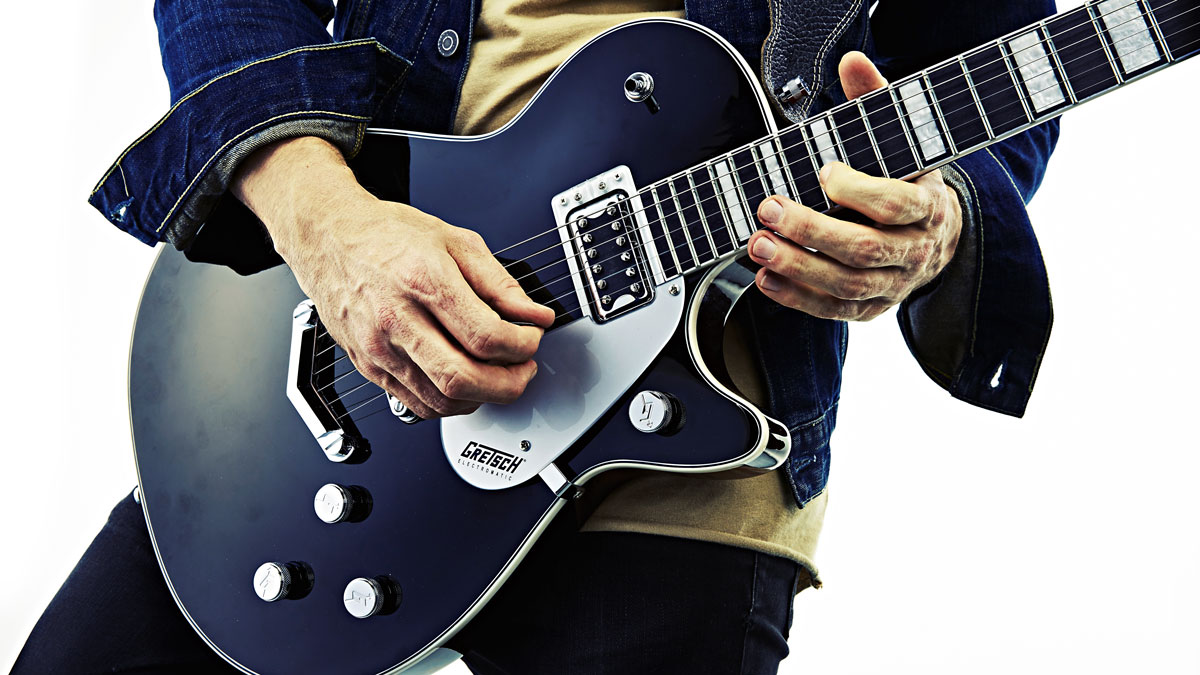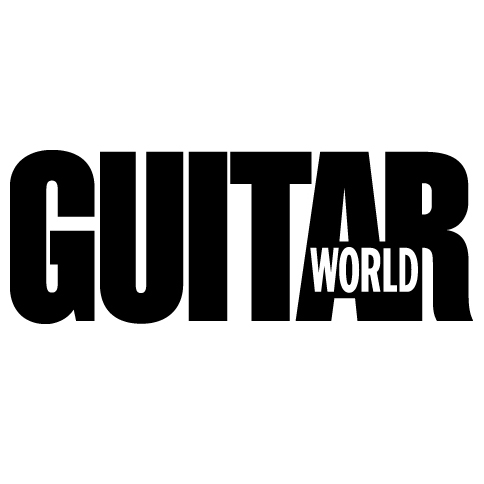15 ways to improve your tone - without breaking the bank
Quick and easy ways to get your sound in shape without going broke

Your guitar playing starts with your tone. After all, it’s your sound that the listener reacts to before you’ve played even five notes.
Here are 15 quick and easy ways to get your sound in shape without going broke, starting with picks and working through every component of your rig, including your pedalboard, amp and electric guitar.
1. Pick a winner
Many guitarists underestimate just how much their pick choice affects their tone. Smart guitarists will carry a pocket full of them in different gauges: lighter ones for strumming, heavier for single-note picking.
While it requires that you adjust your technique, switching from a medium to a heavy pick can do as much to thicken your tone as swapping out a single-coil for a humbucker.
Opting for a light-gauge pick on strummed acoustic in a band setting will help the part sit better in the mix. And you can’t complain about the cost. There’s no cheaper way to change your tone.
2. Learn to unwind
If you play really loud or with gobs of gain, stay away from overwound pickups - they’ll only muddy up your sound. A lower-output pickup, on the other hand, will help maintain clarity while the volume and gain, or both, supply all the girth and sustain you need.
The greatest rock tones of all time - including Eddie Van Halen’s 'brown' sound - were created with relatively weak pickups.
3. String for your style
Strings come in flavors as well as gauges. If you’re seeking a classic jazz sound, flatwound or half-rounds will get you close to it without having to spring for an archtop.
And if you want to sound like Stevie Ray Vaughan, .009s ain’t gonna cut it - try using at least .011s. You’ll also want to tune down to Eb, not only to deepen your tone further but also to ease the added tension that comes with bumping up your gauge.
4. Go wireless
In other words, practice without plugging in - you want to make sure you’re not using the mask of high gain to cover sloppy or uneven playing.
Try to get the best sound possible out of your instrument before you plug in using just your fingers, and the rest will follow.
5. Speaker up
Perhaps you like the way your old combo feels when you play but aren’t crazy about its tone. Before you trade it in for a new one, consider changing speakers.
A more efficient speaker model can make a huge difference. In addition to taming nasty high end or beefing up lows, it can actually make your amp louder.
6. Call the cable guys
Use low-capacitance cables to wire your pedals - and make your own pedalboard. Companies like George L’s and Planet Waves offer kits that allow you to customize cable length to suit the spacing of your pedals. And cutting down on total cable length will improve your tone, too.
7. Move it on over
Play those G, B, and high E string licks on the D, A and low E strings instead, higher up the neck. Why? Those strings offer a fatter sound.
Work on your finger strength until you can bend that D string as you would the B string. And keep in mind that stronger fingers will improve your tone in general. This is one reason Jeff Beck sounds so good. The rest is because he’s Jeff Beck.
8. Kick in the overdrive
Learn to love your overdrive pedal. Sure, we all agree that power-amp distortion is the best, but unless you’re always in a position where you can crank it and yank it, you may not be able to reach optimum volume levels.
Find yourself an amp with a great basic tone, then supplement it with a solid overdrive. That way you’ll be able to control your overdriven sound no matter how loud or soft you’re playing.
9. Stop bottoming out
Turn down the bass. That big bottom you’re putting out is just going disappear into your bassist’s bandwidth the second you’ve counted off the first tune.
10. Get buffer
Consider adding a small buffer, like the TC Electronic Bonafide Buffer or JHS Pedals Little Black Buffer, to your effects chain. This will help restore the frequencies lost as your signal travels through a host of pedals.
11. Cut down on saturated fat
That saturated sound that makes you so excited in your bedroom will make your hottest licks disappear once the rest of the band starts playing.
A tad less distortion will allow your audience to actually hear the sweep picking you’ve been practicing for the past five years.
12. Let your voice be heard
Your guitaristic voice lies largely in your dynamics - that is, the manner in which you attack the strings with both hands. The more distortion, gain or compression you use, the more of these dynamics you’ll lose - and with them your individuality as a player.
The right amount of compression, however, will help your clean licks cut through - learn to strike the balance.
13. Don’t repeat yourself too often
Dirty effects aren’t the only thing that can rob you of your touch. Time-based effects like delay, chorus, flanging and reverb can really sink your sound into the mix, too.
Add the natural reverberation of the club or hall where you’re playing and it’s bye-bye note definition. To use effects sparingly is to use them wisely.
14. Read the room
Tailor your tone to the situation. If you’re playing in a keyboard-less trio in a dry room, you can get away with more of everything than if you were playing in, say, a 10-piece band with a horn section in a high-school gym.
You can use more distortion, chorus, delay and reverb when there are fewer competing instruments in the same frequency range.
If the room is soaking up your ambient effects (delay and reverb), turn them up. If the room is echoing like a mountain yodeler, turn them down or off.
15. Bring the noise
Then again, finding fresh sounds often involves breaking the rules, so chain those fuzzboxes together, run the reverb into the flanged delay, crank up the low-end - and stand back!
Get The Pick Newsletter
All the latest guitar news, interviews, lessons, reviews, deals and more, direct to your inbox!
Since 1980, Guitar World has been the ultimate resource for guitarists. Whether you want to learn the techniques employed by your guitar heroes, read about their latest projects or simply need to know which guitar is the right one to buy, Guitar World is the place to look.
“There are so many sounds to be discovered when you get away from using a pick”: Jared James Nichols shows you how to add “snap, crackle and pop” to your playing with banjo rolls and string snaps
Don't let chord inversions bamboozle you. It's simply the case of shuffling the notes around










![Joe Bonamassa [left] wears a deep blue suit and polka-dotted shirt and plays his green refin Strat; the late Irish blues legend Rory Gallagher [right] screams and inflicts some punishment on his heavily worn number one Stratocaster.](https://cdn.mos.cms.futurecdn.net/cw28h7UBcTVfTLs7p7eiLe.jpg)


